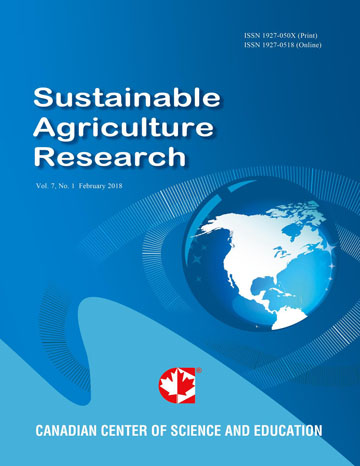Comparing the Effectiveness of Garlic (Allium sativum L.) and Hot Pepper (Capsicum frutescens L.) in the Management of the Major Pests of Cabbage Brassica oleracea (L.)
- P. Baidoo
- M. Mochiah
Abstract
The use of chemical insecticides in crop production has resulted in increased food production in Africa, but their use has resulted in the destruction of beneficial organisms and development of resistance by some insects to the insecticides. The effectiveness of garlic Allium sativum and hot pepper, Capsicum frutescens in controlling the pests of cabbage, Brassica oleracea was evaluated. These botanicals were compared with a standard chemical insecticide Attack® (Emamectin benzoate). The experiment was conducted in a randomized complete block design, with 3 treatments and a control, each of which was replicated 3 times. Plutella xylostella, Brevicoryne brassicae, Hellula undalis and Trichoplusia ni were found on cabbage plants. Significantly fewer of them were found on the treated plants than the control plants. The use of the plant extracts resulted in a reduction in mortality ranging from 10.76% to 55.94%. Fewer natural enemies of B. brassicae were sampled on the insecticide-sprayed plots than the garlic and pepper-sprayed plots. The cost of protecting cabbage plants from insect infestation using Attack was higher than the botanicals. Garlic-treated plots recorded the highest cost: benefit ratio of 1:16 while Attack®-treated plots recorded the least of 1: 9.2. The control effects of the botanicals compared favourably with that of the chemical insecticides. Thus these botanicals can be used as substitutes to chemical insecticides.
- Full Text:
 PDF
PDF
- DOI:10.5539/sar.v5n2p83
Index
Contact
- Joan LeeEditorial Assistant
- sar@ccsenet.org
